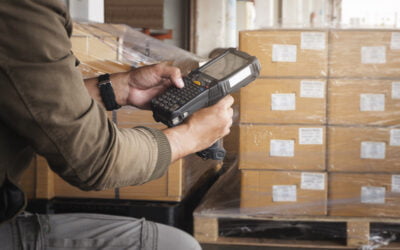Construction equipment asset management is the discipline of logging, managing, and tracking your assets. With an effective system in place, you’ll be able to:
- Speed up maintenance
- Lose fewer assets
- Reduce insurance premiums
- Maintain a robust fixed asset register
- Speed up your daily operations
- Create an audit trail of asset interactions
The best construction equipment asset management software gives you a suite of features to play around with, meaning you’ll be able to tailor your asset tracking operations to your business.
What Is Construction Equipment Asset Management Software?
Construction equipment asset management software is a type of asset tracking software. Asset tracking software allows you to log your assets as unique profiles and start tracking specific, granular information against them.
This granular data is then pulled into a reporting system, meaning you’ll be able to pinpoint asset maintenance information, as well as track bookings and last seen locations of assets.
Your construction equipment asset management software will come with an integrated asset tracking app. This means that you’ll be able to run audits and edit asset data with the asset in front of you, simply with your smartphone.
All of the data you collect online or on your app updates across the board, meaning whether you’re editing on-site or off-site, you’ll be able to manage any changes your assets go through.
Helpful Construction Equipment Asset Management Software Features
There are a range of features at your disposal. These features allow you to create a highly tailored asset management process.
For example, if your assets are hired out, you’ll be able to use an equipment checkout system to log who has the assets and how long they’ll have them for.
If you wish to use the system as an equipment maintenance tracking software, you’ll be able to implement repeating reminders for routine and pre-emptive maintenance, and you’ll be able to use an issues management system to log any issues that need to be addressed.
Location tracking is essential, too. With the best system, you’ll be able to scan your assets into locations, as well as track an asset’s last seen location. This gives you an overall view of who is interacting with assets and where.
Using Asset Tags To Speed Up Operations
Asset tags speed up your operations. These are physical tags that you can stick onto your assets. You can also customise these tags to be metal, meaning that they can go through more weathering than the standard sticker tag.
Every time you scan an assets’ tag, it will open up that asset’s profile, ready for edits. The last seen location also updates, as well as the user who scanned the tag and what time it was scanned.
This means that if an issue is reported on an asset, you can see where the issue was reported, who reported it, and what the issue is, meaning you can pinpoint what needs to be addressed and speed up your maintenance time.
You can also use GPS trackers for your larger assets. If your assets are getting delivered somewhere, you can monitor this delivery using these trackers. GPS asset tracking is a good way to supplement asset tags, as this way you get accountability on and off site.
How Does Asset Tracking Save You Money?
Not only do these tracking procedures save you time, but they also save you money. Time is critical, as the less time you spend on one job, the more jobs you can do.
However, by using auditing features you can pinpoint where your assets are and minimise and mitigate asset losses and asset theft. This gives you a much clearer view of your asset register and increases your business’ accountability.
As you collect your data, an automated fixed asset register will be created, too. This is very helpful in saving you money as you’ll be able to use it for tax and insurance purposes.
In terms of insurance, being able to show that you’ve mitigated thefts and damage, you’ll be able to claim lower premiums. A robust asset register also reduces the chance of ghost and zombie assets, avoiding fines when you’re claiming back tax on your business expenses.
To find out more about how itemit’s construction equipment asset management software can save you money, you’ll be able to contact the team at team@itemit.com. You can also fill in the form below to start your 14-day free trial.
Construction Equipment Asset Management Software
Choose a better way to track your assets
Start your free 14-day trial now
Instant access. No credit card details required.
Related articles
Strategies for Managing Obsolete Inventory
Let's go over the management of inventory, as, in every company, it is one of those behind-the-scenes heroes. When addressing the smooth running of a company, inventory management usually comes first as the pillar of maintaining control over everything. This is an approach that guarantees you have just the correct quantity of stock on hand to satisfy consumer demand without stuffing your storage capacity with surplus items. Whether your organization is a big factory or a tiny retail store,...
Key Benefits of Implementing Remote Inventory Management
For companies, inventory management has always been a major difficulty, but recent technological developments have created new opportunities. One revolutionary tool that lets businesses monitor and control their inventory without physical location ties is remote inventory management. Real-time data availability, cost-effectiveness, and improved asset control are just a few of the clear benefits this change from conventional approaches presents. The main advantages of using remote inventory...
What Digital Asset Management Is?
Digital asset management is one of the vital tools for any business in this digital age. Understanding what DAM is can transform how organisations handle their digital files, which may range from images and videos to documents. A sustainable DAM system will ensure efficient storage, organisation, and retrieval of assets. This article will look at the basics of digital asset management and its advantages.Understanding What Digital Asset Management IsWhat is a digital asset management system? It...



